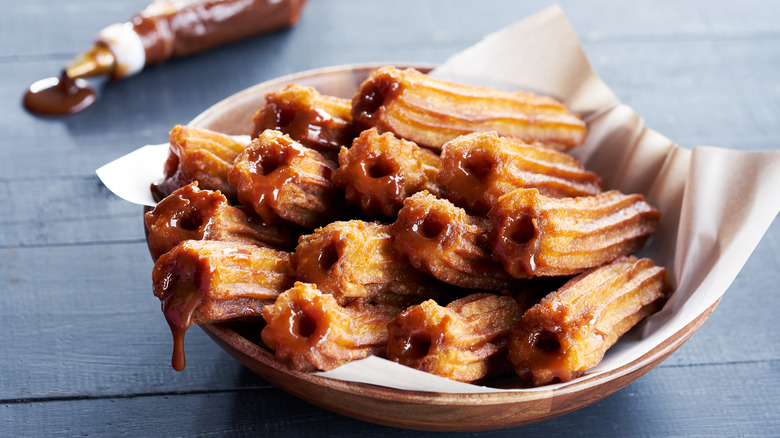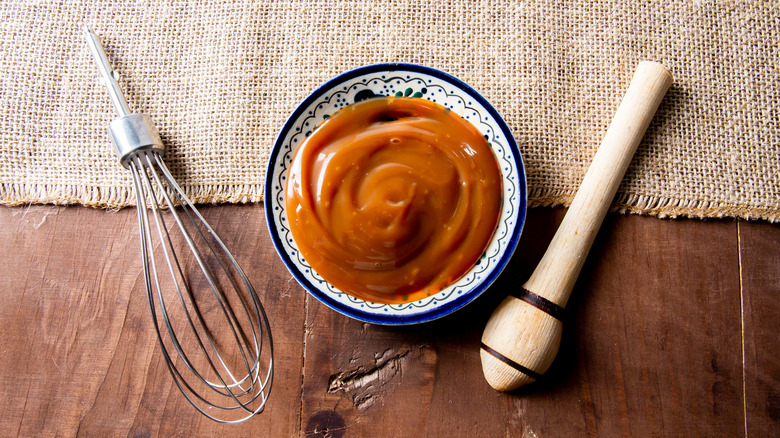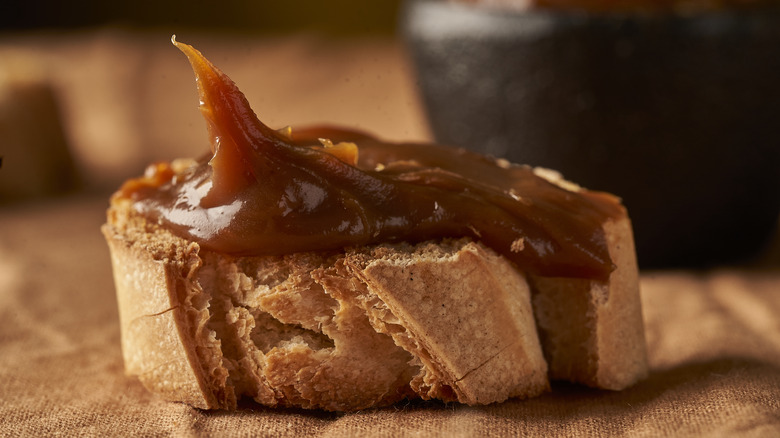What Makes Cajeta Different From Dulce De Leche
Cajeta and dulce de leche are traditional Latin American confections that, at first glance, seem to be one and the same. They are both made from milk and sugar in the style of caramel and have a similar sweet, burnt milk taste and deep brown color. However, that's where the similarities end. Dulce de leche and cajeta have differences in their countries of origin, ingredients, uses, and flavors.
Cajeta is a Mexican confection made from goat's milk, while dulce de leche hails from South America, where cattle are king and cow's milk is the preferred ingredient. Their consistency also differs, as cajeta is runnier, with a dark, deeper brown color. Like many other recipes, dulce de leche has a widely disputed origin, but it is consumed and beloved all over South America, where it goes by different names: Argentina and Uruguay call it dulce de leche, while in Chile it is known as "manjar," in Colombia as "arequipe," and in Brazil as "doce de leite."
What is cajeta?
Cajeta is a popular Mexican ingredient used in desserts and traditional confections, which arrived with the Spaniards in the 1500s. It is made from goat's milk, sugar, baking soda, and a starch such as cornstarch, with flavor variations that include cajeta de vainilla (vanilla), cajeta quemada (burnt milk), and cajeta envinada (flavored with rum or sherry). Traditionally, the milk mixture is boiled for several hours in a copper cauldron, stirring constantly until it thickens and browns. According to Mexico's Bureau of Food Agriculture and Fisheries, this product was known as "dulce de cajete de tejamanil" because it was sold in cylinders made of wood called "cajetes," and from there the name cajeta stuck. It is primarily made in the states of Michoacán, Jalisco, Querétaro, San Luis Potosí, Puebla, and Guanajuato, where the city of Celaya is considered the birthplace of this delicious treat.
In Mexico, the most common way to eat cajeta is by the spoonful or spread on bread. It is also incorporated into regional sweets, as a flavor in recipes such as atole and flan, as a topping for hot cakes or ice cream, or to fill churros and crepes. It is usually darker and stickier than dulce de leche, with a runny consistency that makes it ideal for drizzling over your favorite desserts or incorporating into recipes as a substitute for caramel sauce. Its tangy, burnt sugar flavor adds a different dimension and rich texture to your recipes.
What is dulce de leche?
The method of preparation between dulce de leche and cajeta is the same, but dulce de leche always calls for vanilla as the flavoring, without other flavorings like cajeta does. It is creamier and firmer in texture, with a consistency similar to buttercream icing, which makes it a popular filling or frosting for cakes or cupcakes. In Argentina, the country that most identifies with dulce de leche, it is a popular filling for alfajores, one of its traditional confections. Here, they also have four different styles of dulce de leche for various purposes that range from use as a spread to an ice cream base.
Argentinians love dulce de leche so much that since 1998, every October 11 they celebrate World Dulce de Leche Day, paying tribute to the national delicacy that has been recognized as the "Food and Gastronomic Cultural Heritage of Argentina." As Uruguay also claimed to be the birthplace of dulce de leche, the two countries finally settled the dispute over the claim of the origin of dulce de leche, declaring it an indigenous product of both nations in 2003.


